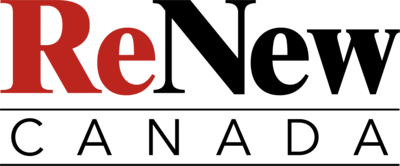RC118 MayJune 2025 - Magazine - Page 33

NEIL ZELLER/DIALOG , GETTY IMAGES
it does not encourage wildlife connectivity. That is where
crossings help bridge that gap.
“The fencing helps funnel the animals towards the
crossing and encourages them to use the overpass as its
preferred migration route,” says Robson.
Incorporating the natural terrain of the Bow River Valley
into the overpass design is not only aesthetic-pleasing, but
by seamlessly blending the thick galvanized steel structure into the land, it helps convince the wildlife to use this
manufactured bridge, rather than crossing the highway.
“The design of the arches re昀氀ects not just the immediate
topography of the foothills, but it also mimics—and takes
its in昀氀uence from—the backdrop of the Rocky Mountains.”
The Bow Valley Gap is known by the Ĩyãħé Nakoda
(Stoney Nakoda) Nations as “the place where animals cross
forever.” With the recent opening of this wildlife overpass,
there is renewed hope that roaming animals, who constantly migrate across this well-travelled highway, will now live
in better harmony with the ever-increasing human tra昀케c
that travels this scenic road in the foothills of the Rocky
Mountains daily and will cross more safely for the foreseeable future. The good news: Alberta’s Ministry of Transportation and Economic Corridors have announced more than
half a dozen future wildlife crossing and fencing projects
(DIALOG is already contracted to work on three of these as
part of the original Bow Valley Gap tender). Robson hopes
these infrastructure projects are a living example for other
provinces and jurisdictions, not just across Canada, but
around the world, to follow as a way to reduce wildlife-vehicle collisions.
“The cost of wildlife-vehicle collisions is astounding,”
he comments. “A rough average is that every collision
costs at least $10,000 in net societal costs somewhere: from
the required resources to mitigate these collisions like
maintenance crews to make road repairs to the burden
on the healthcare system. These structures ultimately pay
for themselves through this reduction in the total cost to
society. Having agencies such as the Alberta government
recognize that, and view these overpasses as an investment—not a cost—is encouraging for building the case of
building more of these structures in the future.”
Even before the overpass was completed, and the project
was shut down in the wintertime for several months in late
2023 and into early 2024 before the arches were constructed,
trail cameras caught animals using the bridge to cross the
highway.
“Larger animals, like elk and bear in particular, take a
while, historically, to start using these crossings,” Robson
concludes. “So, while we don’t have any photos of any of
these animals crossing yet, I can guarantee you that when
someone captures the 昀椀rst elk, grizzly bear or cougar crossing, there’s going to be some excited emails sent.”
PART OF THE HISTORY OF
CANADIAN INFRASTRUCTURE
For more than two decades, ACCIONA has been helping to build
Canada’s largest and most important infrastructure projects.
From research and development to the design, construction,
operation, and maintenance of large-scale, complex projects,
we’ve invested in the environment, the future, and our
Canadian roots with every step.
Find out more at:
RENEWCANADA.NET
MAY/JUNE 2025 – RENEW CANADA 33